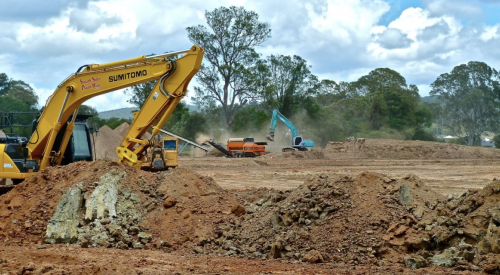The nation’s unprecedented nine-year period of economic expansion has been good to a lot of industries, the housing industry included. As America’s workers and families have prospered, more and more people have been able to buy their first home or upgrade to a larger one. But the old rule holds true here: for every action, there is a reaction.
| Many states lag in updating land-use laws from the Standard City Planning Enabling Act, which was drafted in 1928.
|
Free from having to worry about a recession, losing one’s job or the price of milk, American’s have instead turned their attention to so-called luxury or lifestyle issues. Aware of this, and aware that the economic and housing booms have changed the physical look of many communities, some in the environmental movement have stoked near-hysteria around the term "urban sprawl." Indeed, much of the anti-sprawl literature that’s out there reads as if it were describing a plague, a war or a similar disaster.
Many local housing associations around the country have been caught flat footed by this movement despite the National Association of Home Builders’ excellent "Smart Growth" program, designed to prepare local associations for the political tussles cropping up over sprawl. Increasingly, anti-housing activists continue to spread their "ends justifies the means" tactics from state to state, county by county. By examining the past and profiting from those who’ve already faced - and triumphed over - urban sprawl activists, your company or association can not only avoid being targeted, but can end up with an enhanced reputation and public image to boot.
Sometime in the mid-1990s a number of environmental organizations - which had long been oriented around issues (like pesticides) or species (like whales) - found that they were becoming victims of their own success. As species came of the endangered list, as pesticides were banned, and as an ever-increasing number of competing organizations all vied for the same contribution from the same donor, a shake-out occurred. The demise of the once-powerful Greenpeace illustrates this point well. Suddenly, organizations with payrolls to meet needed to find a new issue that could breathe fresh life into their fundraising plans. For a variety of reasons, housing, or "urban sprawl," became the new cause du jour.
|
||||||||||||||||||||||||||||||||||||||||||||||||
Groups like the American Farmland Trust (long concerned over agricultural issues) and the Sierra Club (founded to deal with national park and preservation issues) have become vocal critics of urban sprawl, suggesting it to be the greatest threat to face America since nuclear power and DDT. These groups struck activist gold as Gen-Xers looked for a cause to embrace and as aging baby boomers decried the loss of "their communities" as long-stagnant cities experienced unprecedented growth and rejuvenation.
This culminated in 1998 when, according to the Brookings Institute, more than 240 state or local ballot or bond initiatives appeared that in one way or another dealt with the issue of "urban sprawl" (74% of these passed). True, some of these efforts merely used anti-sprawl hysteria to pass new tax increases or authorize new government spending. Most, however, were the result of well planned activist campaigns intended to both "stick it to the bad guys," (that’s you, builders) and to raise the profile and contribution level of a few marquee environmental interest groups.
Battle Tactics
A look at these organizations’ websites is instructive. Both the American Farmland Trust (www.farmland.org/) and the Sierra Club (www.sierraclub.org/) feature virtual "fill-in-the-blanks" campaign kits designed to enable activists to easily start harassment campaigns of local housing associations in communities they’ve never even visited. Both of these sites draw special attention to what they refer to as anti-sprawl "tool kits," or "solutions," which are in reality tactics for stoking anti-builder hysteria and enacting various types of building moratoria.
Since most anti-housing campaigns have their start in one of these organizations’ "tool-kits," a general pattern of activity can usually be recognized to confirm that an anti-housing campaign is beginning. First, you’ll begin to see letters to the editor about "sprawl" crop up in your local paper. Comparisons of the messages and terminology used in these letters from around the country leaves little doubt that they are generated from "talking points" or "message memos" written and distributed from central locations. A hallmark of these letters is that they are negative in tone, focussing on blaming builders for a community’s problems, rather than on finding solutions. Terms like "cookie cutter houses," "scrape the landscape bare," "unplanned development," and "take their profits and go," turn up over and over again.
These "voices of the community" are read by local politicians and by newspaper editors, who both know a good story when they see it. Inevitably, a series devoted to "our changing landscape" or "livability" will appear in the local print or broadcast media, using local environmental activists and housing critics and primary sources. Usually, these conclude with a call to action for "somebody" to do "something" before it is "too late," or to "save our children’s future" (all actual examples).
Local politicians will then promise to look into the matter, and before long the city council or county board of commissioners will likely name a "citizen task force" to examine "open space preservation," "livability," "sprawl," "farmland protection," or something similar. This panel will be named with much fanfare, but you’ll notice that it is stocked with government bureaucrats and environmental activists, and - if you’re lucky - one or two token representatives from the home building or real estate community (but don’t be surprised if even these token representatives are in the anti-sprawl camp).
By now the local environmental groups will have formed a coalition under an umbrella banner such as "Save our Land, Save our Future" (actual example). The purpose of this group will be to marshal local resources and as a reception point for the influx of state and national activist resources. This umbrella group will also serve as an ideological bulwark for the "citizen task force." By constantly proposing extremist and radical "solutions," this group works to make the task force’s ultimate recommendations appear downright moderate and reasonable. In the end, the task force will likely suggest a plan of action, based on new property taxes, that will ultimately pay for one type of building moratoria or another.
What Can You Do?
Of course, there are a few simple rules which, if followed, can both lessen the likelihood that your community will be targeted for an anti-sprawl campaign, and - in if one is inevitable - lessen the chances that such a campaign will be successful. Without delving into conspiracy theories, the websites identified above demonstrate pretty conclusively that several national, taxpayer subsidized environmental organizations are engaged in a broad effort to curtail the building of new housing through a variety of means. The good news here is that since these campaigns generally aren’t of local origin, areas with well-prepared builders associations at the ready are rarely targeted.
The most basic line of defense is to have members of your association participating in the public policy process by sitting on committees and standing for elective office. Many larger associations routinely recruit and train members who are interested in holding public office. Such a program will have numerous benefits. Having members running for office will keep builders issues and builders perspectives constantly in the public dialogue, and will maintain a stock of qualified, known individuals available for inclusion on blue ribbon commissions and citizen panels that investigate land use.
Having a well-run public relations committee is also key, and this group should budget so that it can work with a professional consultant to develop long-term plans, strategies and messages. This group should respond immediately and positively to anti-builder letters or articles that appear in the press, and should make the rounds of local speaking opportunities - both familiarizing civic groups with your members and introducing the public to your issues and concerns. From time to time, this committee should commission a survey of local residents, so that your association can keep abreast of local concerns, and can respond to these accordingly.
Your association should also take the lead in establishing a group of local, like-minded associations, such as contractors and Realtors. Together, you can form a non-profit interest group that can operate a community relations program on behalf of the building industry, constantly reminding voters of your economic and civic contributions, as well as countering anti-builder efforts that might spring up. This group should also consult with a public relations professional to develop and enact a long-term, strategic, pro-active plan.
Part of this plan should involve constantly putting forth positive, innovative ideas to address the public’s concern about urban growth issues. Think tanks like the Mackinac Center (www.mackinac.org), the Reason Public Policy Institute and the Cascade Policy Institute each routinely publish statistics and academic studies that tell the "other side" of the sprawl story, and can be tremendously helpful in your efforts. And, of course, the NAHB’s "Smart Growth" program remains a tremendous clearing house of information and ideas. Fact is, very few associations that follow these rules of thumb ever find themselves targets of well-organized anti-building campaigns, and those that do prevail an overwhelming percentage of the time.
So remember, you can’t just wish away the sprawl issue. But you can counter it by treating your association’s public perception as you would any new business venture. By utilizing a consultant (a PR pro), conducting research (polling), networking and lobbying (running candidates for office), and marketing (conducting community relations efforts and being positive) you can not only prevent an anti-sprawl attack, you can also enhance the health and vitality of your association and its members.
Jeff Muir is a public relations professional and has worked as a campaign consultant to the housing industry. He can be reached at UrbanIssuesResponse@hotmail.com.












